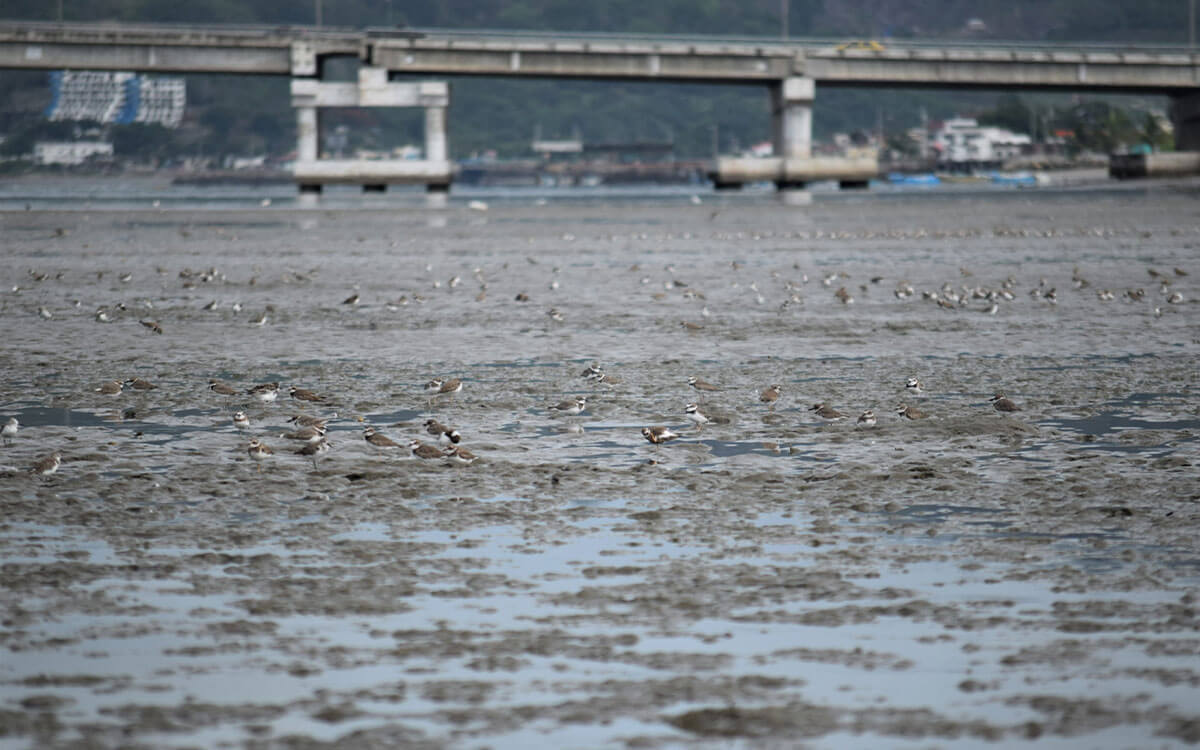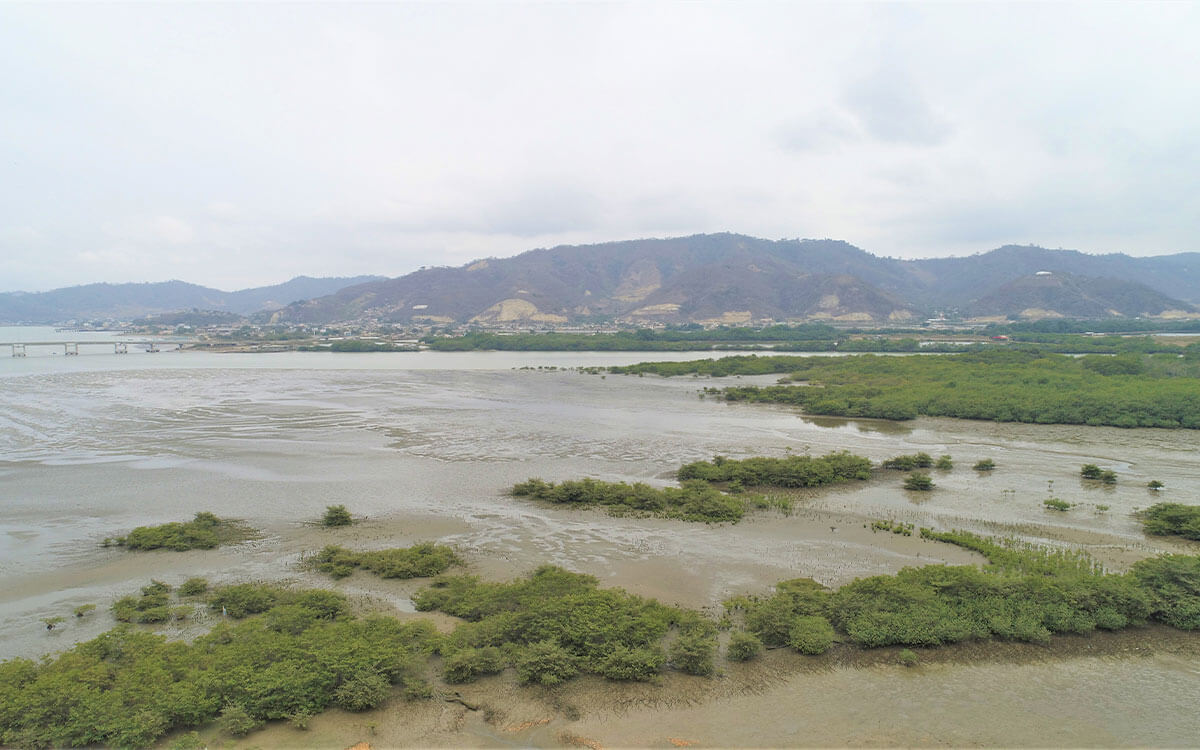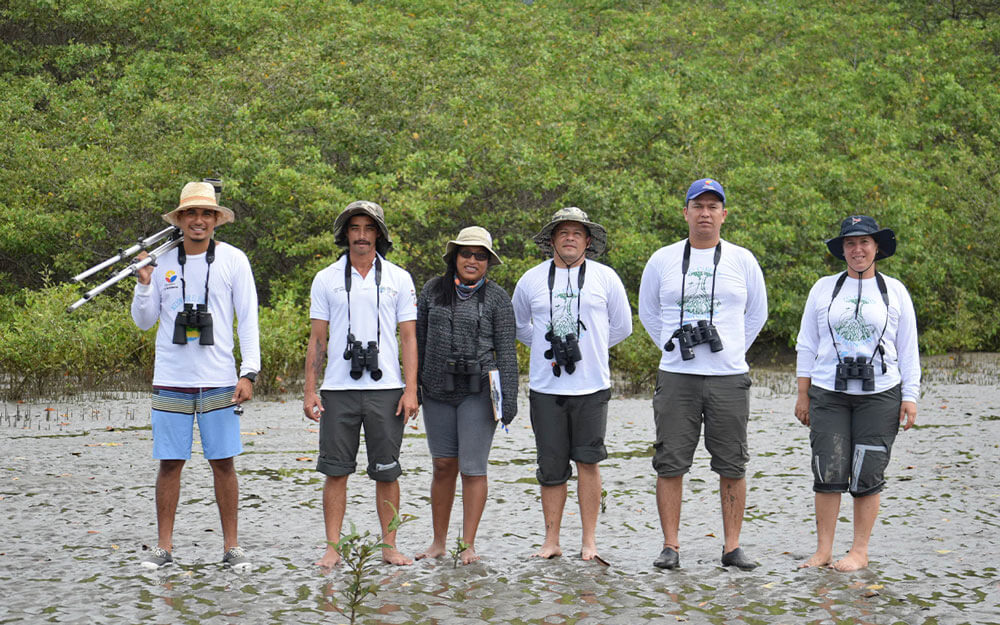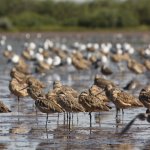The WHSRN Executive Office is excited to announce that Refugio de Vida Silvestre Isla Corazón y Fragata in Ecuador has been designated as a WHSRN site of Regional Importance. It was declared on the presence of more than 1% of the biogeographic populations of the Wilson’s Plover (Charadrius wilsonia beldingi) and Whimbrel (Numenius phaeopus rufiventris).
The Refugio de Vida Silvestre Isla Corazón y Fragata, “REVISICOF” from here on, is located on the pacific coast of the Province of Manabi and managed by the Ministry of Environment, Water and Ecological Transition of Ecuador. It covers 2,812 hectares of intertidal mudflats and mangrove forests. Apart from being a Wildlife Refuge, part of the area (700 Ha) has also been declared an Important Bird Area (IBA) because of its importance to breeding seabirds and waterbirds like the Magnificent Frigatebird (Fregata magnificens), Brown Pelican (Pelecanus occidentalis) and White Ibis (Eudocimus albus) and Anhinga anhinga.
Regular waterbird surveys carried out in the area since 2012 by Aves y Conservación, the BirdLife International partner in Ecuador, and staff of REVISICOF showed the area to be of significant importance to shorebirds. Monthly surveys carried out consequently between August 2018 and February 2019, also by Aves y Conservación, confirmed that REVISICOF is home to many species of shorebirds, the most common being the Black-bellied Plover (Pluvialis squatarola), Semipalmated Plover (Charadrius semipalmatus), Greater Yellowlegs (Tringa melanoleuca), Willet (Tringa semipalmata), Semipalmated Sandpiper (Calidris pusilla), Wilson’s Plover (Charadrius wilsonia beldingi), and Whimbrel (Numenius phaeopus).


Left: Shorebirds on mudflats at the new WHSRN site in Ecuador. Right: Aerial view of Refugio de Vida Silvestre Isla Corazón y Fragata.
According to Ana Agreda from Aves y Conservación, who led the nomination of the site, “17 Nearctic migratory species seek refuge in the 2,800 hectares of mangrove swamps and intertidal mud flats of the Isla Corazón y Fragata Wildlife Refuge in the middle of the Chone River estuary, their conservation is key to their survival and being part of WHSRN is the most important step to ensure that management of the site is successfully achieved.”
Sedimentation of the estuary has been identified as one of the main threats to the site. The rate varies and depends on several factors including deforestation in the upper basin, natural causes (i.e. weather) and construction of public works such as dams and bridges. Pollution due to discharges of industrial, agricultural and domestic wastewater is also a threat to the site. However, despite these threats, REVISICOF has a professional and committed team who communicate with stakeholders in order ensure impacts on the refuge are minimal. The surrounding communities are also very involved in the promotion of ecotourism and conservation of the site, which is seen as a source of income. Other use by local communities, including fishing and recreation have minimal impact on the site and are controlled by the authorities.
With this designation, the Isla Corazón y Fragata Wildlife Refuge becomes Ecuador’s third WHSRN site, and the 110th site in the Network. Please join the WHSRN Executive Office in giving a warm welcome to our new partners in conservation at the Isla Corazón y Fragata Wildlife Refuge.
For more information on the Refugio de Vida Silvestre Isla Corazón y Fragata site, contact site partner, Ana Agreda from Aves y Conservación.

Shorebird monitoring team
Cover Photo: Sandpiper roost at Refugio de Vida Silvestre Isla Corazón y Fragata. Photo: Aves y Conservación.






